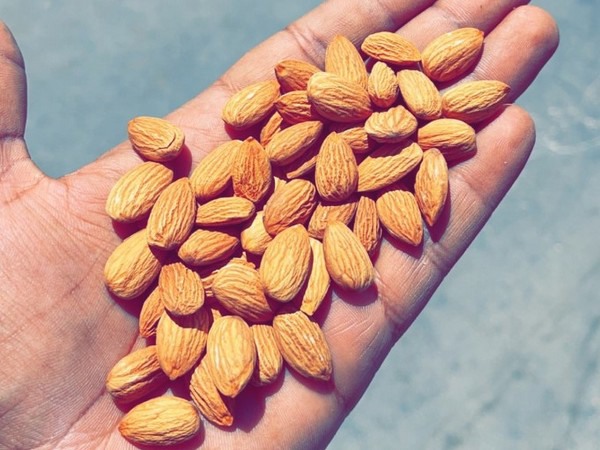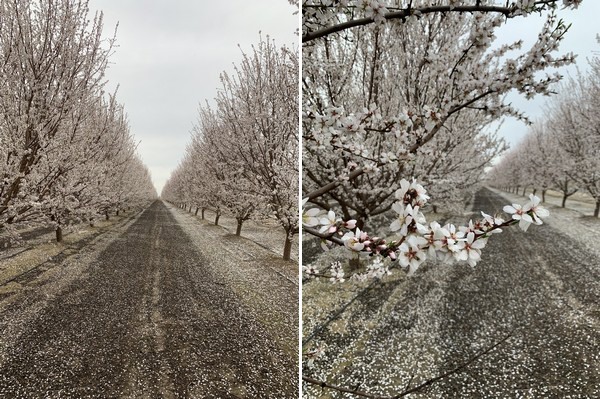What to do with almonds?
That’s the question given the current state of the California almond industry, one that’s undergoing some critical challenges.
 The current estimate for carry-over of almonds into the 2022 crop is 800 million lbs.
The current estimate for carry-over of almonds into the 2022 crop is 800 million lbs.
“Supply-wise with our 2021 crop, we still have a lot of supply,” says Bikram Hundal of Custom Almonds LLC. in Earlimart, CA. “It’s most likely this will be the biggest carry-in that the industry will see into the new 2022 harvest in August. The estimate so far is 800 million lbs. That’s quite a big carry-over.”
What’s behind this carry-over given the fact that the crop itself was only two percent less compared to the 2020 crop? Not surprisingly, logistics. “The port bottlenecks that we’re facing, the ships cannot take enough goods out there to the rest of the world,” says Hundal.
Booking issues
Inconsistency with bookings is one key issue the industry is dealing with. Hundal says bookings that are initially confirmed look to in fact be overbooked and are canceled at the last minute. Or they’ll suddenly be changed and have more limited loading days attached. “It’s a shorter window when we can move containers--two to three days. Before it was four to five days and some containers are able to make it onto ships and some are not,” he says, adding of course that the general shortage of containers is also impacting movement.
Add in the fact that fewer vessels are sailing as well and port congestion continues to be an issue. “It’s gotten worse,” he says. “It started in August because everyone started shipping. We were able to get bookings and ship within a month and a half window. Now we’re two months behind,” he says. “So we have to plan ahead to find bookings for vessels and we don’t know if they’ll have space or if they’ll cancel the booking so we’re just in the dark.”
 The team from Custom Almonds.
The team from Custom Almonds.
While this is affecting key export markets such as India, the Middle East and Europe for California almonds, China is seeing more secure bookings--not surprising given all the empty containers coming back. “But China didn’t buy as many almonds because of the import tariff issue it has with U.S. almonds. And now Australian almonds are going to come in and they’ll likely buy from Australia,” says Hundal.
Meanwhile, thankfully domestic demand was up for almonds. “But the warehouses are full and sellers are pushing because the export is plugged up. The domestic market can only take so much, even though domestic demand is growing at a steady pace,” he says.
Issues with storage too
In fact, storing almonds is another complicating factor of its own. “Before COVID, people would ship the goods onto vessels and some percentage of goods would be on the water at any point of time. But now they’re all sitting in warehouses or somewhere else,” says Hundal.
In turn, the industry is working on building more warehouses and storage. “As a packer, we didn’t anticipate this,” he says. “We were so lean before that we could pack and ship right away and not store. We were like just in time inventory.” However now packers like Custom Almonds are investing in storage, the building of which has also increased in price. “We’re putting in a new warehouse right now and the cost is almost 200x times more than it was two years ago,” says Hundal.
 The bloom on the 2022 California almond crop.
The bloom on the 2022 California almond crop.
It’s no surprise that all of this is affecting pricing which is currently at $1.77/lb for Std 5 percent. When COVID emerged in early 2020, pricing had been at $1.85/lb for similar grade. “Even dropping the price isn’t helping much. It’s not a seller’s market right now,” says Hundal.
So what does this mean for the 2022 crop which begins harvest in August? Hundal notes that trimming input costs is likely in order. Custom Almonds for example has invested heavily in automation and robotics to improve its efficiency. “I could imagine growers trying to cut down costs on inputs such as fertilizers or be more efficient in farming practices, planting only self-fertile varieties rather than use bees,” he says. “It will impact the crop quality too a little bit though.”
Looking ahead at the crop, Hundal notes it's into almond bloom season and sudden hail and frost weather forecast this week might affect the 2022 crop yield by about 10 percent. This, he says, it yet another issue on top of the ongoing drought and water scarcity that California almond growers continue facing.
 For more information:
For more information:
Bikram Hundal
Custom Almonds LLC
Tel: +1 (559)-346-8212
[email protected]
www.customalmonds.com










